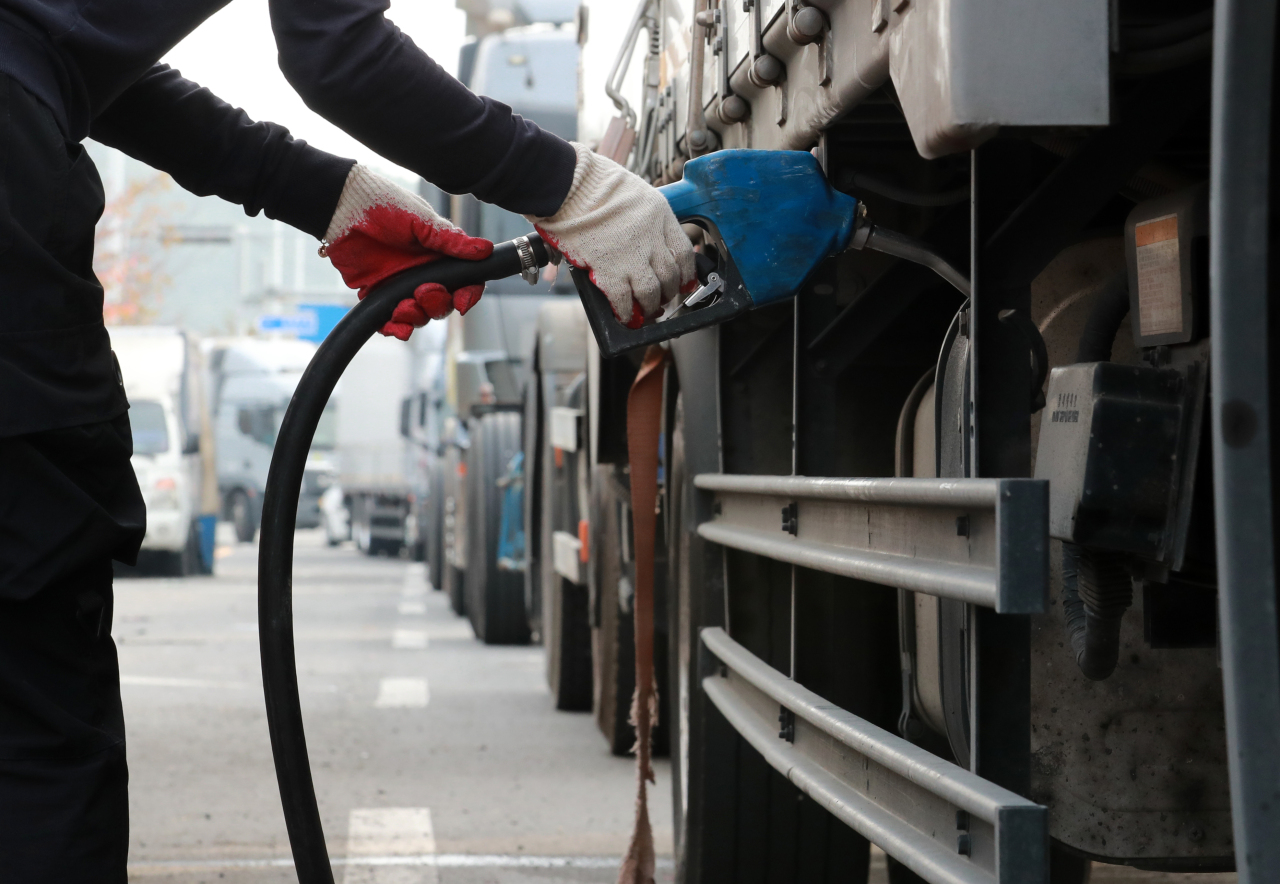The sense of crisis is deepening in South Korea, as an acute shortage of a chemical called urea threatens to disrupt businesses across a vast spectrum from construction to retail.
Government officials are mobilizing diplomacy to secure urea supplies from overseas, but no immediate solution is in sight.
The Korea Herald looks at what is causing this sudden urea crunch and why this is such a hard problem to solve.
1. What is urea, anyway?Urea is a type of nitrogen made mainly of ammonia, which in turn is made using coal or natural gas. This chemical is important for two main purposes -- as fertilizer and as an emissions-control solution for diesel vehicles.
When urea is mixed with water in an approximate ratio of 1-2, it becomes a very useful solution that converts the nitrogen oxide pollutants that diesel cars emit into nitrogen gas and water. This solution is also called diesel exhaust fluid.
Since 2015, all diesel cars sold here are equipped with diesel exhaust fluid systems. If the diesel exhaust fluid tank is empty, the car won’t start.
Normally, a 10-liter bottle of urea solution is enough for a passenger car to travel up to 20,000 kilometers. But cargo trucks that carry freight require more frequent refills.
2. Why is this shortage happening? Because China has stopped urea shipments overseas, and Korea relies almost entirely on its neighbor for the urea it uses.
Korea Customs Service data shows that this year alone, from January to September, 97.6 percent of the country’s urea imports for diesel exhaust fluid came from China.
In the 1990s, several Korean companies produced urea here. But competition with producers in low-cost countries forced them out of business. The last urea factory in Korea shut down in 2011.
Nevertheless, demand for urea continued to grow.
Now, Korea has around 10 million diesel vehicles. Of those, some 4 million need urea solution to move, including some 2 million cargo trucks.
According to Yonhap News, the country uses around 900 metric tons of urea for diesel exhaust fluid every day.
China says it never intended to target Korea or any other country with its export restrictions. The export restrictions are due to a domestic shortage of coal. China has suffered a severe coal shortage since it stopped buying coal from Australia late last year due to a spat with Canberra on how Beijing handled the COVID-19 pandemic.
3. How bad can this get?
It could get very, very bad.
As previously explained, urea is essential for diesel cars. Diesel vehicles account for the vast majority of cargo trucks, buses and even firetrucks.
This means trucks might not be able to deliver cargo, and buses might not be able to pick up and drop off commuters.
A massive retail crisis could occur. Groceries ordered online might not reach customers’ doorsteps. Convenience stores, which stock items two to three times a day, could end up with empty shelves.
Containers could pile up on docks. Factories might have to halt operations, without trucks to ship their products. Because many construction vehicles -- such as bulldozers -- are powered by diesel, construction sites could also be affected.
Urea is also essential for the steel and cement industries, which use it to treat their nitrogen oxide emissions.
4. Why hasn’t this problem been solved yet?Inside diesel vehicles, sensors that check for urea solution must be installed by law. If urea solution tanks are empty, the sensors limit the horsepower or even block the ignition. Taking out these sensors is not only illegal but expensive, as they have complex designs to prevent tampering.
Above all, removing the sensors from all 2 million diesel trucks is unrealistic.
Sourcing urea somewhere other than China is not as easy as it sounds. As the ongoing crisis shows, urea is a strategic material and global supplies are limited. To meet immediate demand, Korea aims to import 27 tons of urea solution from Australia as well as 200 tons of urea from Vietnam. Considering that diesel vehicles in Korea consume 220 tons of urea solution per day, this won't last long.
Korea imports roughly 80,000 tons of urea for diesel cars every year and nearly 100 percent of it comes from China, so finding an immediate alternative source is unfeasible. Even if Korea finds one, the country will likely be at a disadvantage in negotiations.
As a last resort, Korea might redirect the urea it uses for its industries and fertilizer and use it for diesel vehicles, but this could pose health risks for pedestrians and could also damage cars.
Experts point out that industrial urea and fertilizer urea contain high levels of formaldehyde -- a carcinogenic substance. There have been no tests to determine how much formaldehyde would be emitted if diesel vehicles used industrial or fertilizer urea.
Also, the two types of urea contain more impurities. If they were used continuously, these impurities could accumulate inside urea solution tanks and potentially cause the sophisticated systems inside the vehicles to malfunction.
“It’s like white residues that are left behind when you boil off groundwater,” said Lee Ho-geun, a professor of automotive engineering at Daeduk University.
By Kim Da-sol (
ddd@heraldcorp.com), Kim Byung-wook (
kbw@heraldcorp.com)








